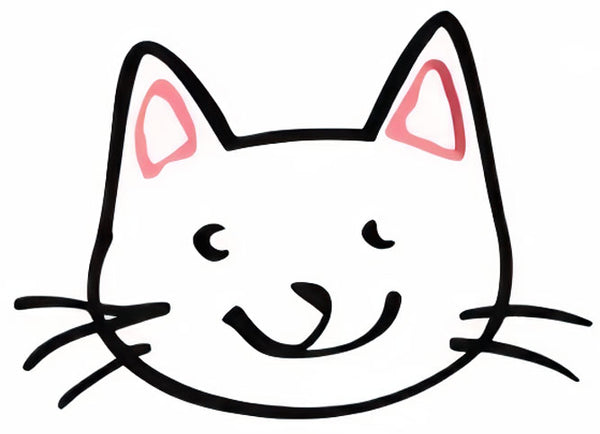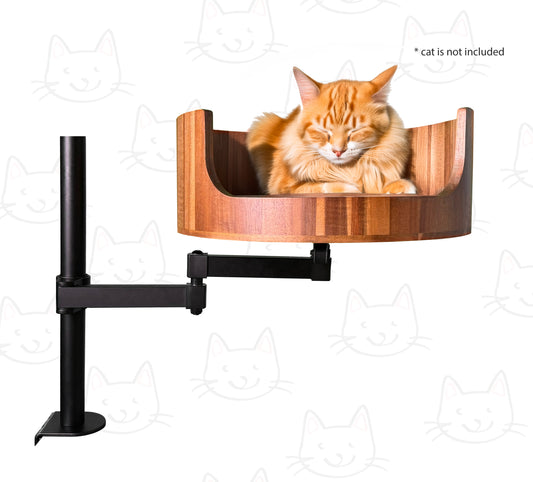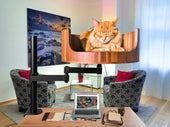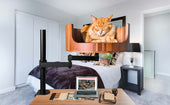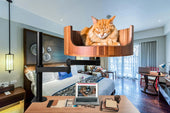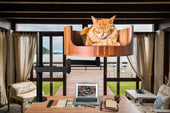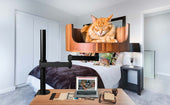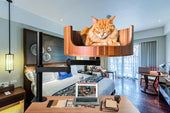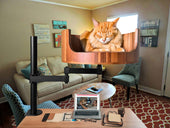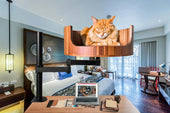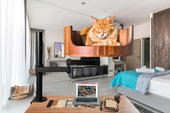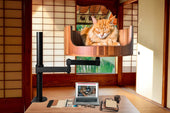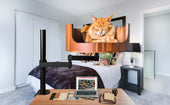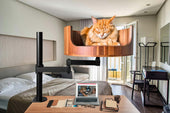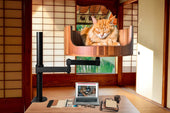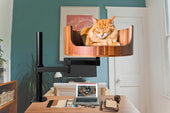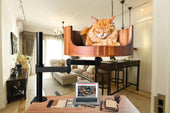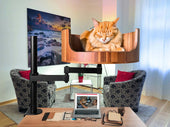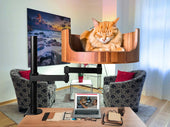
Cat Wagging Tail: Understanding Feline Body Language
Share
Curious about what your cat is trying to tell you when it wags its tail? Understanding feline body language is crucial for building a strong bond with your furry friend. Cats communicate through a variety of signals, and their tail movements play a significant role in expressing their emotions and intentions.
In this article, we will delve into the world of cat body language, specifically focusing on the meaning behind a cat wagging its tail. From the speed of the tail wag to the position and direction, each movement conveys a different message. By recognizing these subtle cues, you can decipher your cat's moods and respond accordingly. Whether your cat is feeling playful, anxious, or frustrated, their tail can provide valuable insight into their state of mind. Stay tuned to learn how to decode your cat's unique body language cues and strengthen the bond between you and your feline companion.
1. A cat wagging its tail may not always indicate aggression, but rather a range of emotions such as excitement or frustration.
2. Understanding feline body language can help pet owners better communicate with their cats and prevent misunderstandings.
3. Tail wagging can be a sign of overstimulation or discomfort, prompting the need for a calm and safe environment for the cat.
4. Cats use their tails as a crucial form of communication, expressing their feelings and intentions through different movements.
5. It is important to observe other body language cues along with tail wagging to accurately interpret a cat's emotions and behavior.
## The Significance of Cat Tail Wagging
Cat tail wagging is a key aspect of feline body language that can convey various emotions and intentions. While many people assume that a wagging tail always indicates a happy cat, this is not always the case. Different types of tail wagging can signal different messages. For example, a slow, relaxed wag may indicate contentment, while a fast, flicking motion could signal irritation or agitation. It is essential for cat owners to pay attention to their cat's tail movements alongside other body language cues to accurately interpret their feline companion's feelings and needs.
## Common Reasons Behind Cat Tail Wagging
There are several reasons why a cat may wag its tail. One common cause is excitement or anticipation, such as when a cat is about to play or eat. Tail wagging can also indicate frustration or impatience, particularly if a cat is unable to access something they desire. Additionally, fear or anxiety can trigger involuntary tail movements in cats, in which case the tail may puff up and flick erratically. Understanding the context in which a cat's tail is wagging is crucial for deciphering its underlying emotions and addressing its needs effectively.
## Body Language Cues to Consider Alongside Tail Wagging
While cat tail wagging is a significant indication of their mood, it is essential to consider other body language cues to gain a comprehensive understanding of a cat's emotional state. Ears, eyes, whiskers, and overall posture can all provide valuable insights into a cat's feelings and intentions. For instance, a cat with flattened ears, dilated pupils, and twitching whiskers alongside a wagging tail may be feeling defensive or threatened. By observing and interpreting a combination of body language signals, cat owners can better communicate with and care for their feline friends.
Frequently Asked Questions
What is cat wagging tail?
Cat wagging tail is a common behavior exhibited by cats when they are feeling agitated, stressed, or anxious. It can also be a sign of excitement or even aggression in some cases.
How can Desk Cat Nest help with cat wagging tail?
Desk Cat Nest provides a cozy and secure space for your cat to retreat to when they are feeling overwhelmed or anxious. By having their own private space, cats can feel more at ease and reduce the likelihood of wagging their tail excessively.
Is Desk Cat Nest suitable for all cats?
Desk Cat Nest is suitable for most cats, but it is important to consider your cat's personality and preferences. Some cats may not enjoy enclosed spaces, so it is important to introduce them to the Desk Cat Nest gradually to see if they will use it.
How do I introduce my cat to Desk Cat Nest?
Start by placing the Desk Cat Nest in a quiet and comfortable area where your cat likes to relax. You can entice them with treats or toys to explore the space and make it a positive experience. Be patient and give your cat time to adjust to the new environment.
Can Desk Cat Nest completely eliminate cat wagging tail?
While Desk Cat Nest can help reduce cat wagging tail by providing a calming environment, it may not eliminate the behavior entirely. It is important to also address the underlying causes of stress or anxiety in your cat to help them feel more at ease.
In conclusion, the Desk Cat Bed is a valuable choice for cat owners looking to address the issue of cat wagging tail. The comfortable and cozy design of the bed provides a safe and secure space for cats to relax and unwind, helping to reduce stress and nervous behavior that can lead to excessive tail wagging. With its soft cushioning and convenient placement on a desk, this bed offers the perfect solution for providing a calming environment for your feline friend. Invest in a Desk Cat Bed today and give your cat the comfort and security they need to keep that tail wagging under control.
